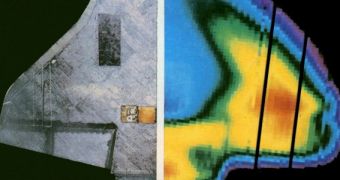A team of physicists and engineers at the Harvard School of Engineering and AppliedSciences (SEAS) is proposing a bold new idea on how we can harvest additional renewable energy from our planet without the need to develop advanced new technologies. The group believes that the infrared emissions our planet releases into outer space can be tapped with existing capabilities.
The researchers envision a hypothetical scenario where a remote desert outpost needs to be powered up at all times. During the day, solar panels can easily handle this requirement, but at night some other power source is needed, such as diesel generators or batteries. The team says that the instrument they are proposing could fulfill such a role.
The infrared energy our planet reflects back into space is a vast and untapped energy source, the SEAS investigators believe. This radiation is released due to the fact that Earth is much warmer than the extreme cold present in the vacuum of space, PhysOrg reports.
This heat imbalance could be put to work in our advantage, scientists led by principal investigator Federico Capasso explain, by transforming it into direct-current (DC) power. The group will publish their analysis on the technological requirements, practical concerns, and thermodynamics calculations associated with their idea in this week's issue of Proceedings of the National Academy of Sciences.
“It's not at all obvious, at first, how you would generate DC power by emitting infrared light in free space toward the cold,” says Capasso, who holds an appointment as the Robert L. Wallace professor of applied physics at Harvard SEAS. He conducted the work with the senior research fellow in electrical engineering at the School, Vinton Hayes.
“To generate power by emitting, not by absorbing light, that's weird. It makes sense physically once you think about it, but it's highly counterintuitive. We're talking about the use of physics at the nanoscale for a completely new application,” Capasso goes on to say.
The expert is famous around the world for his expertise in semiconductor physics, photonics, and solid-state electronics, which is exactly the type know-how needed to assemble such an energy-harvesting system. Capasso is also the co-inventor of the infrared quantum-cascade laser.
“The mid-[infrared] has been, by and large, a neglected part of the spectrum. Even for spectroscopy, until the quantum cascade laser came about, the mid-IR was considered a very difficult area to work with. People simply had blinders on,” he says.
The proposal he and his team came up with relies on the use of a photovoltaic solar panel-like instrument that would produce energy by releasing infrared light, rather than absorb it. “The device could be coupled with a solar cell, for example, to get extra power at night, without extra installation cost,” says SEAS postdoctoral fellow Steven J. Bymes, also a member of the study team.

 14 DAY TRIAL //
14 DAY TRIAL //